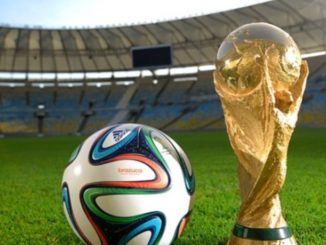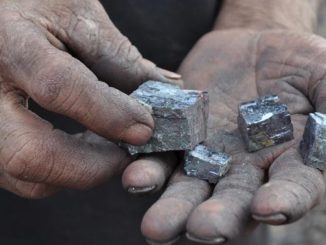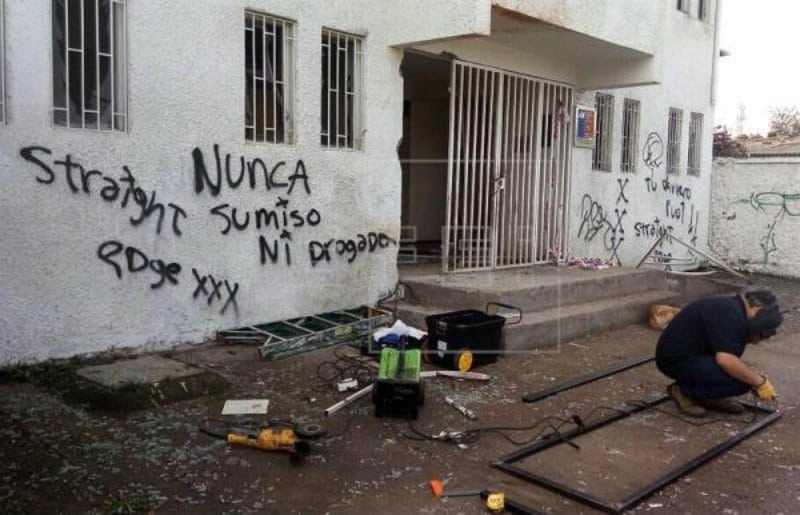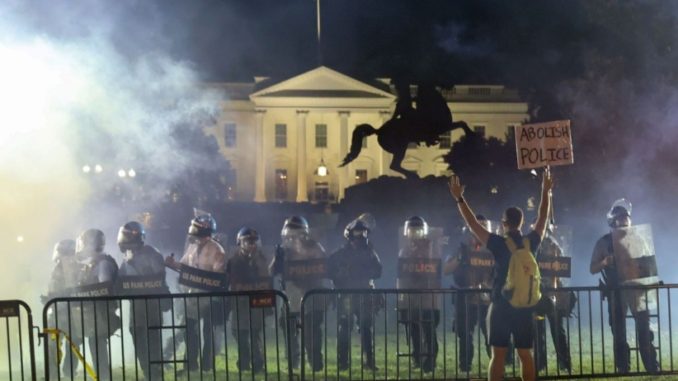
WASHINGTON – President Donald Trump on Monday declared himself the “president of law and order” as protesters just outside the White House gates were dispersed with tear gas, flash bangs and rubber bullets.
Violence has erupted in cities across the United States after a week of protests sparked by the death in police custody of African-American George Floyd.
My fellow Americans – My first and highest duty as President is to defend our great Country and the American People. I swore an oath to uphold the laws of our Nation — and that is exactly what I will do… pic.twitter.com/pvFxxi9BTR
— Donald J. Trump (@realDonaldTrump) June 2, 2020
In striking terms, Trump said he would use his entire presidential prerogative — including threatening to invoke a rarely used law dating back to 1807 — to ensure violent protests end, declaring he would deploy “thousands and thousands of heavily armed soldiers, military personnel and law enforcement officers” to bring order.
Curfews have been imposed in nearly 40 cities, but people have largely ignored them, leading to tense stand-offs. There are unconfirmed rumors of five deaths because of the rioting and clashes.
Riot police clashed with protesters in New York, Chicago, Philadelphia and Los Angeles, firing tear gas and pepper bullets to try to disperse the crowds. Police vehicles were set on fire and shops were looted in several cities.
The National Guard – the U.S. reserve military force for domestic emergencies – said on Sunday that 5,000 of its personnel had been activated in 15 states and Washington, D.C., where crowds once again gathered near the White House, this time lighting fires and throwing stones at riot officers.
“State and local law enforcement agencies remain responsible for security,” the National Guard added.
It has emerged that in Friday night’s unrest, President Donald Trump was briefly taken by the secret service into an underground bunker at the White House, for his safety.
COVID-19: US embassy issues health alert as Chile surpasses 50,000 cases
The U.S. is witnessing the most widespread racial turbulence and civil unrest since the violent backlash to the assassination of Martin Luther King in 1968, says the BBC’s Nick Bryant.
More than 75 cities have seen protests, with streets only days ago deserted because of coronavirus, thronged with demonstrators marching shoulder to shoulder.
A large group of protesters is marching from Union Square down 14th Street in Manhattan pic.twitter.com/vzVskkJzQc
— Liam Stack (@liamstack) June 1, 2020
The Floyd case has reignited anger over police killings of black Americans. For many, the outrage also reflects years of frustration over socio-economic inequality and segregation, not least in Minneapolis itself, where George Floyd died.
There were many instances of police vehicles being vandalized and set alight on Sunday. Riot officers continued to respond with tear gas and flash grenades.
In Philadelphia, local TV stations showed people smashing police cars and looting at least one store.
The Nike store on the corner of 20th Street and 5th Avenue was just looted by protesters. #NYCProtest #GeorgeFloyd pic.twitter.com/F8DP6GvseX
— Liam Stack (@liamstack) June 2, 2020
Mr Trump tweeted: “law & Order in Philadelphia NOW!”, They are looting stores. Call in our great National Guard.“ Looting was also reported in Santa Monica, California.
In Minneapolis, a lorry driver was arrested after reportedly breaching a road barrier before speeding towards a crowd of protesters marching along a major motorway.
Footage posted on social media showed dozens of people surrounding the vehicle and pulling the driver out from behind the wheel after it came to a stop.
The driver was later taken to hospital with minor injuries. There were no immediate reports of other casualties.
Minnesota’s Governor Tim Walz said the motive of the driver was unclear, adding: “To not have tragedy and many deaths is simply an amazing thing.”
In Denver, thousands of people protested peacefully in Colorado State Capitol by lying face down with their hands behind their backs and chanting: ”I can’t breathe” – a reference to the circumstances of Mr Floyd’s death.
Large-scale protests also took place in Atlanta, Boston, Miami and Oklahoma City.
There were also several reported incidents of riot police responding disproportionately to the demonstrators. In Atlanta, Georgia, two officers were sacked on Sunday for using excessive force – including firing a taser – on two young college students.
Hundreds of people have been arrested since the protests began a week ago.
Down With USA#USAonFire pic.twitter.com/D0qp2608Nu
— Salman Raza 313 (@IbneHaider17) June 1, 2020
A white ex-policeman has been charged with murdering Mr Floyd, 46, in Minneapolis. Derek Chauvin, 44, is due to appear in court later on Monday.
It follows the high-profile cases of Michael Brown in Ferguson, Eric Garner in New York and others that have driven the Black Lives Matter movement.
For three years, Donald Trump presided over a nation of relative peace and prosperity. The crises he faced were largely of his own making, and he confronted them by rallying his supporters and condemning his opponents.
Now Trump faces a situation ill-suited to a playbook of division. The US economy has been hobbled by a deadly pandemic. George Floyd’s death at the hands of a Minneapolis police officer has spread racial unrest across the nation. The public is uncertain and afraid – and increasingly angry.
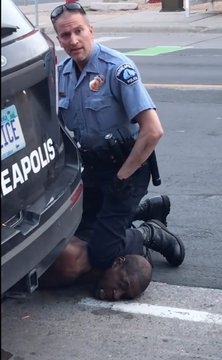
These are circumstances that would test the abilities of even the most skilful leaders. This president, however, risks becoming lost at sea. His public calls for unity and healing have been undermined by a penchant for Twitter name-calling and bellicosity. Message discipline, a valuable attribute at this moment, is not his forte.
The economic and social devastation of the pandemic has created a political landscape of dry brush ignited by the lightning strike of Floyd’s death. The president may not be able to contain the wildfire, even if he isn’t feeding the flames.–via MercoPress

